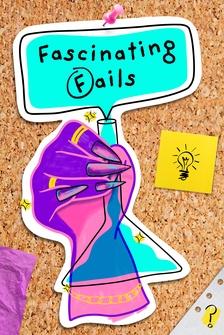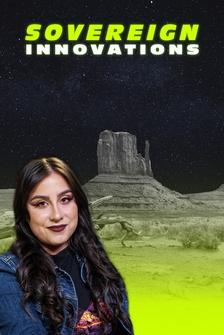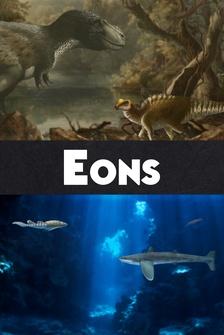(eerie electronic music) - [Caitlin] This might be the most shocking feature in all of Antarctica.
- [Jill] What do you think of when you see it?
- Honestly?
I think of the glacier having its period.
- [Jill] Okay, yeah.
- [Caitlin] Blood Falls.
What is this place?
Why is there so little ice on this part of Antarctica?
And why is this glacier bleeding?
- [Arlo] We are in the Dry Valleys, one of the most unusual spots in Antarctica, because it's part of the 1% of the continent that isn't covered by ice.
- [Narrator] Instead, here, we find craggy mountains.
Rock is carved by wind and grit to form impossible-looking sculptures.
- [Arlo] It looks more like Mars than Earth.
- [Caitlin] This makes the Dry Valleys one of the most scientifically interesting regions to study on the planet.
- I think it's a great analogue for both Mars, and a place like Enceladus.
- [Arlo] And here in the Dry Valleys, Blood Falls is one of the most intriguing features.
- [Peter] Blood Falls is a bit of an obsession for a lot of people.
I mean, there's nothing else like this on Earth.
- It's like this really visceral feature just jumps out at you, you know?
Blood Falls.
- It's an outlier, and so we learn from those extremes, right?
It's different than anything else we know.
- [Arlo] To find out more about this exotic landscape, we've come to Lake Bonney to meet with scientists Jill Mikucki and Peter Doran.
- [Caitlin] You heard that right.
This is a lake.
- [Peter] It's really like any other lake on Earth, but there's just a really thick ice cover that stays here all the time.
- [Caitlin] Peter studies the lakes and streams.
He's a hydro geologist.
- [Arlo] Jill is a microbiologist.
She studies what's living here.
- [Caitlin] So there's actually stuff living in the dirt.
- Oh, yeah, in the dirt, and in the lakes, in the lake ice, in the rocks.
- [Peter] There's actually worms in the dirt, there's microscopic worms, nematodes.
- [Caitlin] What?
I can't believe anything lives here, where it can get down to negative 75 degrees in winter.
- What got me interested at first was this notion of how life survives below ice because of other worlds in our solar system, places like Mars, Europa, or Enceladus.
These are gonna be really cold places.
- So this is running water, that's actually the Blood Falls actually flowing.
- I don't know, we'll see, let's go find out.
- Okay.
I've joined Jill to investigate what exactly Blood falls is, and why she's so fascinated by it.
- Hold those gloves.
- [Caitlin] It's well below freezing, so I'm surprised to see running water on a day like today.
To figure out what's going on, we measure the temperature of the water.
- See, look at that, it's minus 5.2.
(laughs) - Wow, negative five Celsius is how much Fahrenheit?
- [Jill] You could do that in your voiceover.
(laughs) - [Caitlin] Negative 5.2 degrees Celsius is about 23 degrees Fahrenheit.
Why is this water flowing almost 10 degrees below the freezing point of water?
- Right now, the salinity is reading, I don't know if you can see that, 75 parts per thousand, oh, there he is, 83 parts per thousand.
- [Caitlin] What's, like, ocean water?
- [Jill] 35.
- [Caitlin] Oh, wow, so this is super salty.
- [Jill] This is super salty.
- [Caitlin] This water isn't frozen because it's so salty, more than twice as salty as ocean water, but that also means something extraordinary about where this water comes from.
- The fact that it's so salty tells you it's not glacier melt, right?
It has to be coming from somewhere else.
- [Caitlin] Glacier ice is made of hundreds to thousands of years worth of snowfall, and snow is made of fresh, not salty, water, so where is this briny water coming from?
Looking around, there's another clue, the red color that makes this feature look bloody.
- All the red here is iron oxides, but as you can see, this water here is pretty clear.
If the water is clear and there's iron in it, that means it hasn't been oxidized yet, and as it spends time at the surface, that's when it becomes oxidized and leaves this beautiful red color around.
- [Caitlin] The red crust on this glacier is actually rust, but this means, not only is Blood Falls strangely salty, but the Blood Falls brine has also not been exposed to the atmosphere for a very long time.
It's from deep below the glacier.
- The liquid source below the glacier has potentially been isolated for millions of years.
So, the next thing to do would be to collect some samples, and take this back to the lab, and see if there's any microbes in here.
- Cool.
These microbes Jill hopes to find could offer insight into what kind of extreme life we might find elsewhere in the solar system, like on Mars, where we know there's salty liquid below the polar ice.
It's so cool that it's actually flowing while we're here.
- Yeah, this is amazing.
This is actually quite fortunate.
This is a tricky little feature.
It doesn't always flow when you'd like it to, I guess, so it's one of those challenging mysteries to study, and it always keeps me guessing.
- [Arlo] But what makes Blood Falls actually flow?
Why is it only here that we see this bizarre feature?
To find out, Peter Doran's team is closely watching its activity with a camera.
- Yeah, this camera's been taking photos for the past two years, twice a day.
- But what is the point of taking a picture of it?
- No one really has a super complete record of actual flow events, so the timing of flow events, how often and when it's flowing, is actually not really known.
- [Arlo] Looking at the time lapse over a few days, you can sometimes spot distinct discharge events.
It isn't always flowing.
- [Caitlin] You could say that Blood Falls isn't regular.
- But we don't think there's a yearly cycle, so we're trying to figure out what the cycle is, and whether it's connected to seasonality, whether it's connected to maybe even wind storms.
My view is, Blood Falls is a pressure relief valve that, whenever there's a pressure change by a movement of the glacier, something happens, and sometimes, Blood Falls squirts out, sometimes, it doesn't.
- [Caitlin] Peter thinks that Blood Falls flows when there is pressure from the glacier on the underground liquid, which begs the question, how big is this aquifer that feeds Blood Falls?
Is this an isolated system?
Or is Blood Falls tapping something bigger?
To find out, we have to peer deep below the ice by taking to the skies.
A project called SkyTEM flies a massive electromagnetic sensor over the area, allowing scientists to peel back the surface and see what lies beneath.
- So SkyTEM can see hundreds of meters into the ground, and tell us the difference between frozen ground and unfrozen ground, and where there's water, where there's groundwater.
- [Caitlin] SkyTEM has revealed that there is much more to the Dry Valleys than meets the eye.
Here, the green shows underground liquid, lots and lots of it.
This part of the Dry Valleys has an expansive groundwater system.
- For the longest time, we didn't think there was groundwater underneath the Dry Valleys, and so we've always viewed these lakes as being isolated, they weren't connected by any groundwater system, and then we flew the sensor over, we spent two weeks flying the sensor around the Dry Valleys, and it completely changed our perception of water and connectivity in the Dry Valleys.
- So perhaps it's like a deep groundwater system that might exist on Mars.
They've recently found a subglacial lake below the southern ice cap on Mars.
- [Caitlin] And Blood Falls is like a window into this alien environment.
- It's a portal into the water beneath the surface of the valley, and it's the first one we've had.
- [Caitlin] By studying it, scientists may discover clues about how life could evolve and survive in the extreme environments of other planets.
- [Jill] How do you live in the absence of sunlight for extended periods of time?
What does that look like?
What unique adaptations do these organisms have to be able to survive in cold, darkness, under extremely saline conditions?
If we can understand how life operates below ice here, we have a much better chance of maybe knowing where to look or how to look for the life on other worlds.
- [Caitlin] Okay, so I need gloves.
- [Jill] Go ahead, put on some gloves.
- Purple gloves.
Purple's my favorite glove color.
- [Zac] All right, Caitlin, ask the question.
- [Caitlin] What am I asking?
- What are we doing here?
What the (penguin squawks) are we doing here?
What we have here is our sample hole, so we're gonna try to collect some water from Lake Bonney.
Here, take this end.
When you're ready, you can yell fire in the hole.
- [Caitlin] Fire in the hole.
- [Jill] Say it like you mean it.
(laughs) - [Zac] Come on.
- [Man] No pressure.
- Gosh.
(Jill laughs) I mean, like, who's listening?
- We're listening.
- The lake is listening.
- I am.
(Jill laughs) - Give it.
- Fire in the hole.
- Yeah.
(water splashes) - [Caitlin] Oh, that was a good splash.
(soft piano music)















